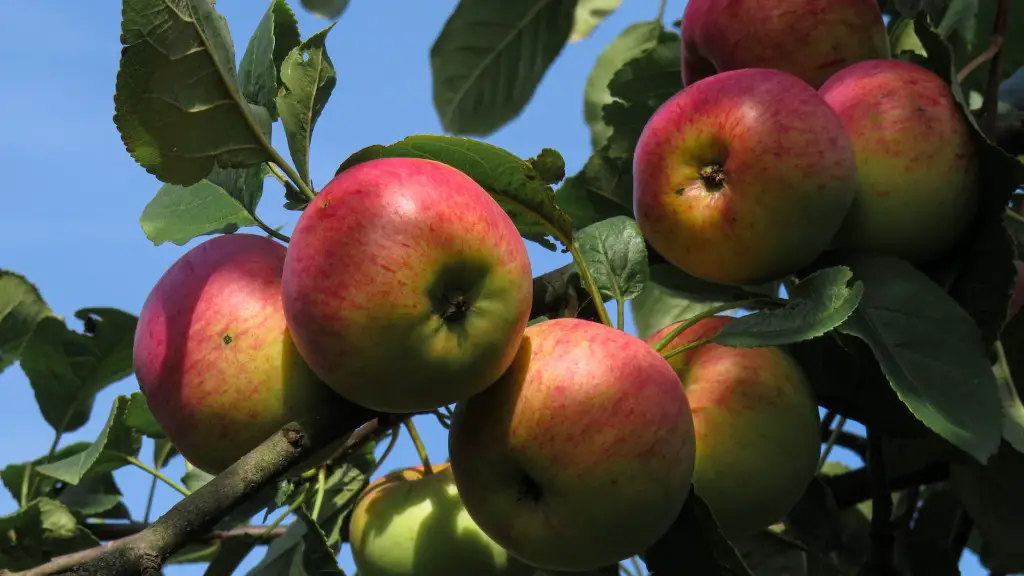Avocado Tree Roots: a Review
When growing an avocado tree, one of the most important factors to consider is the root system. Avocados typically need deep and rich soils for establishment and growth. There are many questions about how wide their roots can potentially grow and their impacts on their environment. This article examines these topics to give the reader a better understanding of avocado tree root systems.
Avocados are a type of flowering plant species in the family Lauraceae. They are commonly found in tropical and subtropical regions. In the United States, avocados are grown primarily in areas such as California and Florida. Their root systems are critically important in the establishment of the tree, as well as its subsequent growth.
Most avocado tree roots are located in the top 24 inches (60cm) of soil. The roots spread outwards from the main trunk, fanning out to a maximum of 3 feet (0.9m) across. This is relatively small compared to other tree species, making avocados suitable for small spaces. They can also be grown in containers, if properly managed.
Avocados are shallow root feeders, meaning that the majority of the root system is located in the upper layers of the soil. This allows them to efficiently absorb nutrients and water without having to grow deeper roots. As such, they require regular topsoil supplements or irrigation to remain healthy and productive.
Avocado roots are relatively delicate and can be easily damaged. Compacted soils and/or construction works can disrupt their nutrient uptake and prevent the development of strong, healthy root systems. As such, it is important to ensure that a tree is planted in an appropriate location with ample space and access to sunlight.
Avocados do benefit from the presence of an aeration layer when planted to optimize water and nutrient absorption. This aeration layer helps the roots to extend outward, as well as expand downwards. Additionally, correct fertilizer applications and soil amendments also help to promote healthy root growth and development.
Root pruning is another method used to manage avocado tree root systems. Pruning should be done when the tree is dormant and should focus on removing small, dead, or diseased roots. This, in turn, helps to promote healthy and vigorous root growth for the next season. Additionally, root pruning can help to reduce the need for excessive watering.
Avocado Tree Fertilization Needs
Avocados require regular fertilization to supplement their soil-based nutrients. Proper fertilization helps to maintain health, growth, and development in the short and long term. Common fertilizers used on avocado trees include compost, manure, or synthetic fertilizers. Synthetic fertilizers are generally available in high and low nitrogen formulations that provide a balanced, long-lasting and year-round nutritional source.
Compost is an excellent fertilizer choice for avocado trees, as it provides a slowrelease source of nutrients. It also helps to improve the soil structure, aiding in water retention and drainage. Manure, when well-aged and properly aerated, also improves the soil condition and provides essential nutrients to the tree. Organic fertilizers, such as manure and compost, should be applied at least once per year in the spring when the tree is actively growing.
In regards to synthetic fertilizers, nitrogen is the most important element for avocado trees. Nitrogen deficiencies can lead to slow growth, discoloration of the leaves, and smaller fruit yields. Nitrogen fertilizers should be applied two to three times per year, beginning in late spring. The type and amount of fertilizer used should be tailored to the individual tree and soil type.
Avocado Tree Irrigation Needs
Avocado trees require consistent, but not excessive, water. Too little water can lead to a decrease in fruit production, while too much can lead to root system damage. Generally, avocado trees need 1.5 to 2 inches (3.8 to 5.1 cm) of water per week, split into two to four evenly spaced waterings. Watering should be adjusted based on weather and the depth of the soil.
Soil type is an important factor in irrigation needs. Sandy soils are likely to need more frequent irrigation than heavier soils due to their lower ability to retain water. The best method for assessing irrigation needs is to check the soil moisture with a soil moisture probe or trowel.
Avocado trees also benefit from regular soil amendments. These amendments help to improve the soil structure, promote water retention, and reduce the need for frequent irrigation. Examples of soil amendments include compost, straw, and wood chips. Additionally, mulch helps to maintain soil moisture and reduce the risk of evaporation.
Pest and Disease Management of Avocado Trees
Avocado trees are prone to pests and diseases, both of which can significantly reduce growth and production. Common pests include aphids, mealybugs, and scale. These pests can spread quickly and should be monitored closely and treated early.
Diseases that commonly affect avocado trees include root rot, black spot, and powdery mildew. Disease prevention is the best treatment and is achieved by providing the tree with optimal growing conditions and proper pruning to promote air circulation. Chemical control with fungicides is also recommended for treating chronic or severe cases.
In addition to chemical treatments, there are a number of other cultural practices that can help to prevent pests and diseases. These include proper sanitation, pruning and thinning, and adequate spacing to promote air circulation. Additionally, organic treatments such as neem oil, insecticidal soap, and horticultural oils can be effective in managing pest and disease pressure.
Conclusion
Avocado tree root systems are an important consideration when growing this species. The root system can grow a maximum of 3 feet (0.9m) across, is shallow root feeders, and is susceptible to damage. Proper fertilization and irrigation are essential for promoting health and growth, as well as disease and pest prevention. By understanding and managing its root system, you can ensure the success and productivity of your avocado tree.
Root Pruning Techniques
Root pruning is an effective way to manage the root system of an avocado tree. Pruning should be done when the tree is dormant and should focus on removing small, dead, or diseased roots. This can help to promote healthy and vigorous growth while minimizing the effects of overcrowded roots.
When pruning, the goal is to remove a small portion of the root system, approximately 10%, and allow the remaining roots to fill the space created. Pruning should begin in the drier areas of the root system and move outward, taking care to preserve as much of the root system as possible.
It is important to remember that avocado trees are delicate, and extreme or aggressive root pruning can cause severe damage. Pruning should be done carefully and gradually to ensure that it is done correctly. Additionally, it is a good idea to prune in stages, as this allows the root system to reestablish and recover more quickly after the pruning.
Soil Testing for Avocado Trees
Soil testing is a valuable tool for avocado tree health and productivity. Testing helps to determine the macronutrient and pH levels of the soil, as well as the presence of toxic pollutants. This information can then be used to determine the best fertilization plan and irrigation practices for the tree.
Soil tests should ideally be done every few years to determine if any changes are needed. When selecting a soil testing service, it is important to find one with experience in handling avocado tree soil. The results of the tests should be used to adjust the fertilizer type and quantity to the needs of the tree and soil type.
Testing can also help to identify any adverse effects that the root system is having on the surrounding environment. It can provide insight into how the tree is using water and nutrients from the soil, as well as the impact of construction works or other invasive activities. Additionally, soil testing can help to detect any potential nutrient or salinity issues that may be affecting the tree.
Avocado Tree Management
Proper management of the tree’s root system is essential for its growth and productivity. By providing it with the right fertilizers and irrigation, having good soil structure, and pruning as needed, you can ensure its health and success. Additionally, understanding and managing any pests or diseases is also important for maintaining productivity. With these elements in place, you can ensure the successful and productive growth of your avocado tree.



